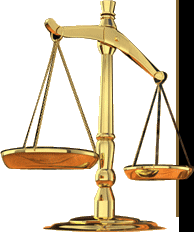Polygraph
The Justice Department and several of its law enforcement components use and conduct polygraph examinations for a variety of administrative and investigative uses.
According to the Inspector General’s Office, a polygraph examination is a process that uses a diagnostic instrument capable of measuring and recording someone’s physiological reactions as the individual answers questions. Because physiological reactions can vary between someone telling the truth and someone being deceptive—by comparing an individual’s reactions to different questions—a polygraph examiner can detect reactions that may indicate deceptive responses to specific questions.
 While results of the polygraph examinations are generally “not” admissible in court, various components of the Justice Department, in particular the FBI, the Drug Enforcement Administration [DEA], the Bureau of Alcohol, Tobacco, Firearms and Explosives [ATF], and the Inspector General [IG] all use polygraph examinations as an investigative tool primarily for use in criminal, foreign counterintelligence and counterterrorism investigations, as well as administrative inquiries conducting internal affairs and misconduct investigations and pre-employment and security screening.
While results of the polygraph examinations are generally “not” admissible in court, various components of the Justice Department, in particular the FBI, the Drug Enforcement Administration [DEA], the Bureau of Alcohol, Tobacco, Firearms and Explosives [ATF], and the Inspector General [IG] all use polygraph examinations as an investigative tool primarily for use in criminal, foreign counterintelligence and counterterrorism investigations, as well as administrative inquiries conducting internal affairs and misconduct investigations and pre-employment and security screening.
Aside from the above mentioned agencies, the Justice Department’s Criminal Division, Justice Command Center [JCC], Antitrust Division [ATR], National Drug Intelligence Center [NDIC], Office of Professional Responsibility [OPR], Federal Bureau of Prisons [BOP], and the U.S. Marshalls Service [USMS] all use polygraph examinations, but do not operate their own polygraph programs. And during Fiscal Years [FY] 2002 thru 2005, more than 49,000 polygraph examinations were conducted.
NOTE: Information contained was obtained from a report issued by the Justice Department’s Inspector General titled, “Us of Polygraph Examinations in the Department of Justice,” dated September 2006.

